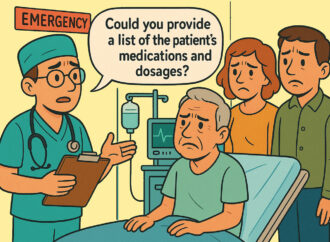Understanding Healthcare Providers: Doctors, Physician Assistants, and Nurse Practitioners
It might be difficult to navigate the healthcare system when you don’t know who does what and everyone has a different title. You may be scheduled to see physicians, nurse practitioners (NPs), or physician assistants (PAs). But what’s the difference between these roles and how can they all be part of your health care?
The differences are based around the amount and types of training they have and what they are “allowed” to do. In terms of booking that elusive appointment, you’ll likely see big differences in their availability, with doctors often the hardest to book and NPs often the easiest.
Key Differences between Doctors, PAs and NPs
- Training and EducationRequired
- Doctors have extensive education and training, including medical school and residency programs (12+ years)
- PAs attend graduate-level PA programs with clinical rotations and certifications (6+ years)
- NPs obtain advanced nursing degrees (MSN or DNP) and typically have RN experience with advanced certifications (7+ years)
- What They Can Do
- Doctors can do pretty much everything including surgery, depending on their specialty
- PAs can do lots of things doctors can do but they generally work under the supervision of a doctor
- NPs may have their own practice or work under a doctor but often focus on holistic and preventive care
- Approach
- Doctors generally have a specialty and tend to focus diagnosis and treatment
- PAs – As their title implies, physician assistance are parts of the doctor’s team in treating you
- NPs will often focus on education and prevention
More Details
Doctors (MDs and DOs)
Doctors are medical professionals who hold either a Doctor of Medicine (MD) or a Doctor of Osteopathic Medicine (DO) degree. They are often referred to as physicians and have extensive training in diagnosing and treating a wide range of medical conditions. Many work in hospitals and their own practice
Training and Education
- Undergraduate Education: Typically, doctors complete a four-year undergraduate degree, often with a focus on pre-medical studies or a related field.
- Medical School: Following undergraduate education, doctors attend medical school for four years. Here, they receive comprehensive training in medical sciences and clinical skills.
- Residency: After medical school, doctors undergo a residency program, which can last between three and seven years, depending on the specialty. During this period, they receive hands-on training under the supervision of experienced physicians.
- Fellowship: Some doctors pursue additional training in a subspecialty through fellowship programs, which can last one to three years.
Scope of Practice
- Diagnosis and Treatment: Doctors are fully licensed to diagnose and treat a wide range of medical conditions. They can order and interpret diagnostic tests, develop treatment plans, and perform surgeries.
- Prescribing Medications: Doctors have full prescribing authority, allowing them to prescribe medications as needed.
- Specialization: Doctors can choose to specialize in fields such as cardiology, neurology, surgery, pediatrics, and more. Specialization often requires additional training and certification.
Approach to Care
- Comprehensive Care: Doctors often provide comprehensive care, managing both acute and chronic conditions. They coordinate care with other specialists and healthcare providers.
- Preventive Care: They emphasize preventive care, including routine check-ups, screenings, and vaccinations to help maintain overall health and prevent disease.
Related content: How to Save on Medication Costs
Physician Assistants (PAs)
Physician Assistants are licensed medical professionals who work under the supervision of doctors. They are trained to provide a wide range of medical services, including diagnosing and treating illnesses.
Training and Education
- Undergraduate Education: PAs typically complete a four-year undergraduate degree, often with coursework in science and healthcare.
- PA Program: Following undergraduate studies, PAs attend a physician assistant program, which usually lasts about two to three years. This program includes both classroom instruction and clinical rotations in various medical fields.
- Certification: After completing their training, PAs must pass the Physician Assistant National Certifying Exam (PANCE) to become certified.
Scope of Practice
- Diagnosis and Treatment: PAs are trained to diagnose and treat medical conditions, often performing many of the same functions as doctors. They can conduct physical exams, order and interpret tests, and develop treatment plans.
- Prescribing Medications: PAs have prescribing authority, although the extent of this authority can vary by state and is typically supervised by a doctor.
- Collaborative Practice: PAs work in collaboration with doctors and other healthcare providers. While they can perform many tasks independently, they do so under the supervision and guidance of a doctor.
Approach to Care
- Team-Based Care: PAs often work as part of a healthcare team, providing care that is coordinated with other providers. This collaborative approach ensures comprehensive care for patients.
- Flexibility: PAs can work in various medical settings, including primary care, emergency medicine, surgery, and specialty clinics. Their versatile training allows them to adapt to different healthcare environments.
Nurse Practitioners (NPs)
Nurse Practitioners are advanced practice registered nurses (APRNs) who have completed additional education and training to provide a broad range of healthcare services.
Training and Education
- Registered Nurse (RN) License: NPs start their careers as registered nurses, typically earning a Bachelor of Science in Nursing (BSN) degree and obtaining RN licensure.
- Graduate Education: NPs must complete a graduate program, such as a Master of Science in Nursing (MSN) or Doctor of Nursing Practice (DNP). These programs generally take two to four years to complete and include both advanced clinical training and coursework.
- Certification: After completing their graduate education, NPs must pass a national certification exam in their specialty area, such as family practice, pediatrics, or geriatrics.
Scope of Practice
- Diagnosis and Treatment: NPs are trained to diagnose and treat a variety of medical conditions. They can conduct physical exams, order and interpret tests, and develop treatment plans.
- Prescribing Medications: NPs have prescribing authority, and in many states, they can prescribe medications independently. The scope of this authority can vary by state.
- Autonomous Practice: In some states, NPs can practice independently without the supervision of a doctor. In others, they collaborate with doctors or work under a supervisory agreement.
Approach to Care
- Holistic Care: NPs often emphasize a holistic approach to care, considering the physical, emotional, and social aspects of a patient’s health. They focus on patient education, preventive care, and wellness.
- Patient-Centered Care: NPs are known for their patient-centered approach, spending time with patients to understand their concerns and develop personalized care plans.
I’ve received great care from doctors, physician assistants, and nurse practitioners. I’ve also had not-so-great experiences as well. Some nurse practitioners have less time pressures and can spend a great of time with you so can really understand any condition you might have and how best to live with and treat it. In and out of a hospital setting, physician assists are often more available for those times when you “need to know right now” whether you should worry or not.
Hopefully, understanding the differences between doctors, physician assistants, and nurse practitioners can help you make better decisions about your healthcare team and what to ask for. You may not always need a doctor, but you deserve someone who cares for you and helps you stay healthy.
Disclaimer: The information on this website is provided for informational purposes only and should not be considered as legal, tax, accounting, or medical advice. Please consult a licensed professional for help with any specific questions and issues you may have.













Leave a Comment
Your email address will not be published. Required fields are marked with *